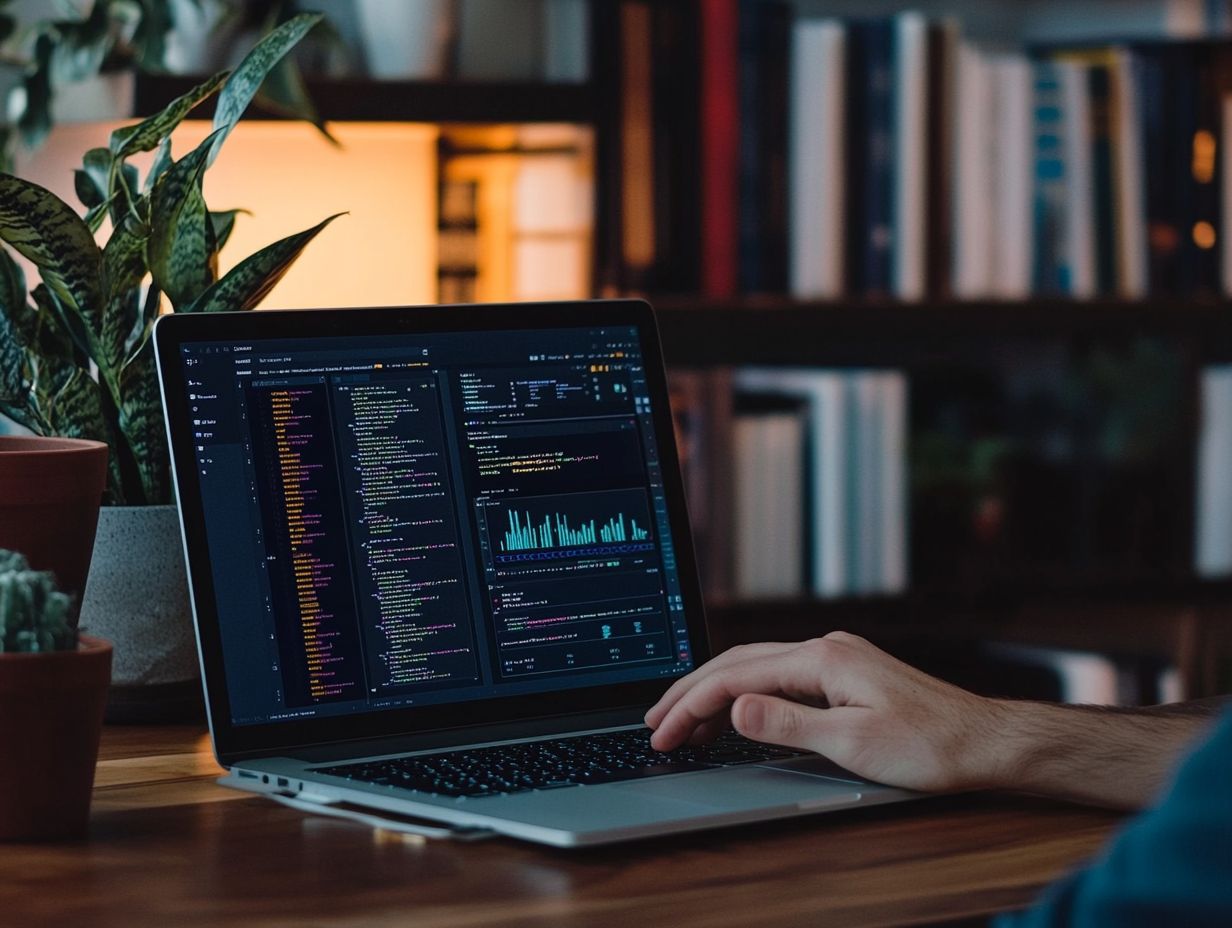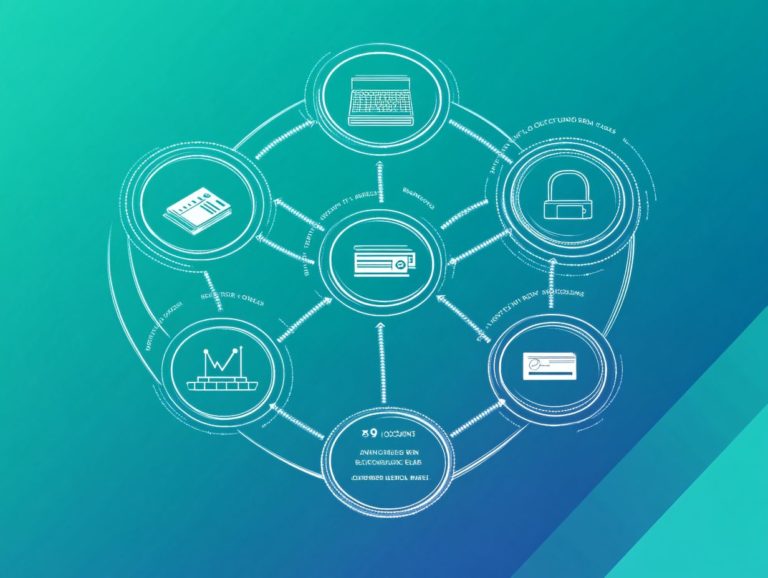how to conduct a vulnerability assessment remotely
In today s digital landscape, grasping the nuances of vulnerability assessments is essential for protecting your organization’s valuable assets.
This article delves into the definition and purpose of these assessments, emphasizing their critical role in uncovering potential risks. You ll discover the myriad advantages of conducting assessments remotely, such as saving both time and money. Additionally, you will receive practical guidance on effective preparation.
By leveraging the appropriate tools and implementing robust mitigation strategies and best practices, this guide will empower you with the insights needed to elevate your security posture.
Contents
- Key Takeaways:
- Understanding Vulnerability Assessments
- Benefits of Remote Vulnerability Assessments
- Preparing for a Remote Vulnerability Assessment
- Conducting the Assessment
- Implementing Mitigation Strategies
- Best Practices for Remote Vulnerability Assessments
- Frequently Asked Questions
- What is a vulnerability assessment and why is it important to conduct it remotely?
- What are the steps involved in conducting a vulnerability assessment remotely?
- How do I choose the right vulnerability scanning tool for remote assessments?
- What are some common challenges when conducting a vulnerability assessment remotely?
- How often should a vulnerability assessment be conducted remotely?
- Is it necessary to hire a professional to conduct a vulnerability assessment remotely?
Key Takeaways:

- Conducting a vulnerability assessment remotely saves time and reduces costs.
- Preparing for a remote assessment includes identifying key assets, establishing communication protocols, and using appropriate tools and techniques.
- To ensure accuracy and effectiveness, it is important to prioritize and address vulnerabilities found during the assessment and implement mitigation strategies.
Understanding Vulnerability Assessments
Understanding vulnerability assessments is essential for any organization aiming to elevate its cybersecurity stance and effectively manage security vulnerabilities.
These assessments provide a thorough check of the security risks in your network and applications, allowing you to pinpoint weaknesses that could be exploited by malicious actors.
By utilizing threat intelligence and software that checks for weaknesses in your systems, you can uncover critical vulnerabilities and develop a solid remediation plan that aligns with compliance regulations.
This proactive approach not only strengthens your defenses but also positions your organization as a leader in safeguarding sensitive information.
Definition and Purpose
A vulnerability assessment is a systematic process designed to identify and evaluate security vulnerabilities within your organization’s IT infrastructure, applications, and network systems.
This thorough examination highlights weaknesses and offers valuable insights into best practices for remediation and enhancement of your digital security.
By aligning with broader IT security policies, these assessments ensure that your risk management strategies integrate seamlessly into your organization’s overall security framework.
Your main objectives should include understanding the potential impact of identified vulnerabilities, prioritizing them based on their risk levels, and facilitating proactive measures to mitigate these risks.
This all-encompassing approach is a game-changer for protecting your sensitive information and maintaining the integrity of your systems against potential breaches.
Benefits of Remote Vulnerability Assessments
Remote vulnerability assessments present you with an array of advantages that can greatly elevate your cybersecurity posture, especially through a vulnerability assessment for nonprofit organizations, while conserving both time and valuable resources.
By leveraging automated scanning tools and established vulnerability scanning policies, you can efficiently pinpoint weaknesses within your network infrastructure without the limitations of needing to be physically present.
This method cuts operational costs and enables your cybersecurity specialists to dedicate their efforts to analyzing security weaknesses and formulating effective remediation strategies.
Cost and Time Efficiency
Cost and time efficiency are crucial in today’s fast-paced digital landscape, and understanding how to leverage vulnerability assessments for compliance plays a significant role in achieving both.
By reducing the need for on-site inspections, you can cut down on travel expenses and allocate your resources more effectively. Tools like Qualys and Rapid7 streamline the scanning process by automating vulnerability checks, allowing you to swiftly identify and address potential security gaps from virtually anywhere.
These solutions enable you to prioritize vulnerabilities based on risk and impact, simplifying your vulnerability management efforts. By leveraging such technologies, you not only ensure robust security but also optimize your operational workflows, leading to substantial savings in both time and costs.
Preparing for a Remote Vulnerability Assessment

Proper preparation for a remote vulnerability assessment is crucial for ensuring a thorough check of your organization’s security posture and effectively identifying key assets and risks, especially when using vulnerability assessment tools for non-technical users.
Begin by conducting asset discovery to create an accurate inventory that includes internet-facing systems and IoT devices.
It’s vital to establish clear communication protocols between cybersecurity specialists and stakeholders. This will help address vulnerabilities during the assessment process.
Identifying Key Assets and Risks
Identifying your key assets and their associated risks is an essential first step in any vulnerability assessment process.
This foundational phase provides clarity on what truly matters to your organization, guiding your security efforts moving forward.
By thoroughly identifying your assets, you can prioritize which components whether hardware, software, or data need immediate protection.
Using an asset register, which is a list of all your important resources, is pivotal in this endeavor. It acts as a comprehensive inventory of your assets and a tool for assessing their associated risks.
Such registries enable you to track vulnerabilities effectively, facilitating informed decision-making that aligns with your broader vulnerability management strategy.
Understanding the importance of different assets helps you allocate resources effectively toward risk mitigation and security enhancements.
Establishing Communication Protocols
Establishing effective communication protocols is crucial for the success of your remote vulnerability assessments.
These protocols are your lifeline for smooth teamwork, ensuring that everyone remains informed and aligned throughout the process.
In a virtual environment, where physical presence is absent, maintaining clear lines of communication is essential.
Tools like video conferencing platforms, project management software, and instant messaging apps become vital resources to facilitate this dialogue.
By leveraging these technologies, you can share insights, clarify expectations, and provide immediate feedback, fostering a collaborative spirit that enhances the overall success of your assessment.
This isn t just about gathering data; it s about cultivating an atmosphere where open communication drives insights and enriches decision-making.
Conducting the Assessment
Conducting a vulnerability assessment requires a methodical approach that employs a range of tools and techniques, including understanding how to create a vulnerability assessment policy.
You ll utilize automated scanner tools and engage in penetration testing, which means simulating attacks to find weaknesses, to pinpoint vulnerabilities within your network infrastructure and applications.
These strategies enable cybersecurity specialists to collect vital data on security flaws while thoroughly evaluating your organization s overall security posture.
Adhering to established vulnerability scanning policies is essential; it ensures that every potential attack vector is assessed and addressed appropriately.
Tools and Techniques for Remote Assessments
You will find a variety of tools and techniques employed for effective remote vulnerability assessments, including a specialized vulnerability assessment for educational institutions, ensuring a comprehensive evaluation of your organization’s security posture.
Automated scanning tools like Nessus and Qualys play a crucial role here. They provide a systematic approach to identify potential security weaknesses.
These platforms meticulously scan your networks, web applications, and systems to uncover misconfigurations and outdated software, often gateways for cyber threats.
Utilizing penetration testing frameworks such as Metasploit enables security professionals to simulate attacks, offering invaluable insights into how vulnerabilities can be exploited.
By leveraging these technologies, your organization can enhance its vulnerability management efforts, prioritizing remediation based on the level of risk.
This ultimately fosters a proactive security culture that keeps you one step ahead of potential threats.
Consider assessing your own security posture or checking your systems against identified vulnerabilities!
Evaluating Findings and Prioritizing Risks

Evaluating your findings from vulnerability assessments and prioritizing risks is crucial for crafting an effective remediation plan. By analyzing the data collected during these assessments, you can pinpoint weaknesses in your systems and identify which vulnerabilities pose the most significant threat.
This process entails categorizing risks according to their potential impact and likelihood of exploitation. This enables your team to focus efforts where they are most needed. Once you ve prioritized the risks, the next step is to develop a comprehensive strategy that outlines specific actions to fix these issues.
To streamline this process, creating a detailed vulnerability assessment report becomes essential. It guides stakeholders through the findings, severity levels, and proposed solutions in a well-structured manner, ensuring clarity and focus in your remediation efforts.
Implementing Mitigation Strategies
Implementing mitigation strategies is essential for addressing identified vulnerabilities and enhancing your organization s overall security posture.
This includes applying effective patch management techniques, utilizing fixing methods, and continuously monitoring for emerging threats.
Cybersecurity specialists play a pivotal role in executing these strategies. They ensure that your security settings remain updated in line with the latest threat intelligence.
Addressing Vulnerabilities and Improving Security
Addressing vulnerabilities effectively plays a key role in enhancing your organization s security posture. By using systematic fixing techniques, you can significantly strengthen your defenses against potential threats.
Regular vulnerability assessments, paired with automated scanning tools, provide a comprehensive means to identify security flaws throughout your systems. For startups looking to enhance their security posture, vulnerability assessment for startups: getting started is essential. Once vulnerabilities are uncovered, it’s crucial to prioritize remediation efforts based on severity and potential impact.
For example, adopting multi-factor authentication can significantly mitigate risks associated with compromised credentials. Maintaining a robust security patch management strategy ensures your software remains up-to-date and minimizes the chances of exploitation.
Companies like XYZ Corp demonstrate the effectiveness of these strategies. After conducting thorough employee training on security best practices, they observed a dramatic reduction in phishing incidents. This reinforces the vital role an informed workforce plays in maintaining a strong security framework.
Best Practices for Remote Vulnerability Assessments
By implementing best practices for remote vulnerability assessments, you ensure accuracy and effectiveness in identifying and addressing security vulnerabilities, including knowing what to include in your vulnerability assessment report.
This meticulous approach not only safeguards your assets but also boosts your overall security like never before!
Ensuring Accuracy and Effectiveness
Ensuring accuracy and effectiveness in vulnerability assessments is essential for reliably identifying and managing security vulnerabilities.
A well-structured approach helps you pinpoint potential threats and enables you to prioritize efforts based on the severity and potential impact of the vulnerabilities you’ve identified.
Implementing comprehensive scanning policies and keeping them updated creates a robust framework for continuously monitoring your security posture.
Utilizing advanced methodologies, like automated scanning tools paired with manual reviews, can significantly enhance the precision of your assessments.
This multi-layered strategy allows your security teams to uphold high standards in vulnerability management, ensuring they can respond promptly and efficiently to emerging threats.
Frequently Asked Questions

What is a vulnerability assessment and why is it important to conduct it remotely?
A vulnerability assessment is the process of identifying and analyzing potential vulnerabilities in a system or network. It is important to conduct it remotely to ensure the security of your organization’s digital assets. To effectively prepare for a vulnerability assessment, especially in today’s remote work environment, follow the appropriate steps.
Are you ready to take your security to the next level? Start your vulnerability assessment today and secure your digital assets!
What are the steps involved in conducting a vulnerability assessment remotely?
The steps involved in a remote vulnerability assessment include:
- Identifying the assets to be assessed.
- Choosing a vulnerability scanning tool.
- Configuring the tool for remote scanning.
- Conducting the vulnerability scan.
- Analyzing the results.
- Fixing any identified vulnerabilities.
How do I choose the right vulnerability scanning tool for remote assessments?
When selecting a vulnerability scanning tool, think about what vulnerabilities it can find and whether it works well with your systems. It s also essential to check for remote scanning capabilities.
What are some common challenges when conducting a vulnerability assessment remotely?
Common challenges can include:
- Finding all the assets to be assessed.
- Dealing with connectivity and network issues.
- Lack of physical access to systems.
- Protecting sensitive data during the process.
How often should a vulnerability assessment be conducted remotely?
The frequency depends on your organization’s size, system complexity, and the data types you manage. Generally, it s wise to conduct assessments at least once a year or after significant system changes.
Is it necessary to hire a professional to conduct a vulnerability assessment remotely?
You can perform a remote vulnerability assessment on your own. However, hiring a professional is highly recommended, as they ensure a thorough assessment and can guide you through the key elements of a vulnerability assessment to effectively fix any vulnerabilities.






